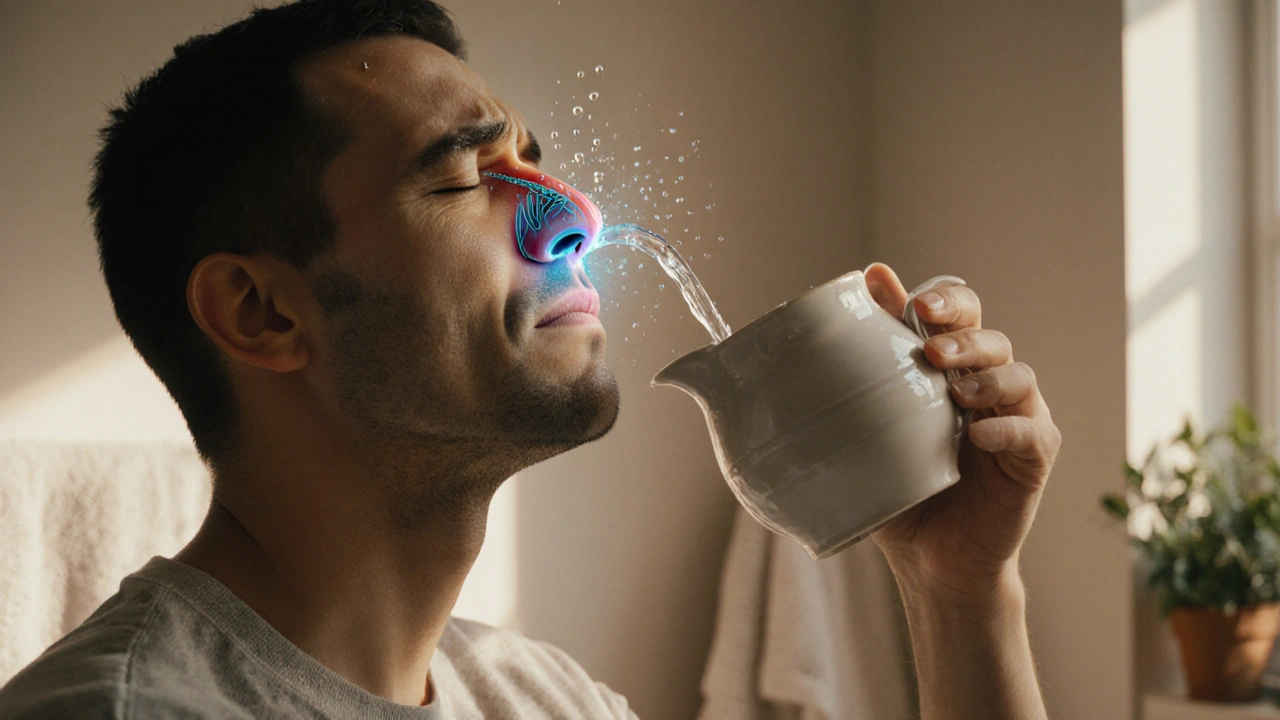Nasal Lavage: Simple Steps to Clear Your Sinuses
Ever felt a stuffy nose that just won’t quit? A good nasal lavage can wash away mucus, allergens, and irritants in minutes. Below you’ll find straight‑forward instructions, safety tips, and little tricks that make the process painless and effective.
What You Need Before You Start
First, gather the basics: a neti pot, squeeze bottle, or sinus rinsing kit; distilled or boiled‑then‑cooled water; and non‑iodized salt. The ideal salt‑to‑water ratio is about one‑quarter teaspoon of salt per 8 oz of water. Some people add a pinch of baking soda to reduce sting, but it’s optional.
Make sure the water is lukewarm – too hot can burn, too cold feels uncomfortable. If you’re using tap water, boil it for three minutes and let it cool. This kills any microbes that could cause infection.
Step‑by‑Step Nasal Irrigation
1. Fill your device with the prepared saline solution. 2. Lean over a sink, tilt your head sideways, and keep your mouth open to breathe. 3. Gently pour or squeeze the solution into the upper nostril. It will flow through the nasal passage and exit the lower nostril. 4. Switch sides and repeat. 5. Blow your nose gently to clear remaining fluid.
Do this once or twice a day when you have congestion, allergies, or a cold. Most people find twice a day during a flare‑up enough; daily use is fine if you have chronic sinus issues.
Common Mistakes to Avoid
Don’t use plain tap water – it can harbor harmful organisms. Skip the harsh chemicals; plain salt works best. Also, never force the flow; a gentle pressure prevents ear discomfort and reduces the chance of water entering the middle ear.
After each session, clean your device thoroughly with hot, soapy water and let it air‑dry. Replace the device every few months or sooner if you notice any wear.
When to Skip or See a Doctor
If you have a severe nasal blockage, a recent nasal surgery, or an ear infection, hold off on lavage until a professional clears you. Persistent pain, nosebleeds, or a foul smell after rinsing are signals to stop and talk to a healthcare provider.
In rare cases, people develop a condition called “sinus irritation” from overly aggressive rinses. Reducing frequency or switching to a lower‑salt solution usually fixes it.
Quick FAQ
Can I use regular table salt? Use non‑iodized, fine‑grind salt. Iodine can irritate the lining.
Is a neti pot better than a squeeze bottle? Both work; the squeeze bottle may feel more controllable for beginners.
How long does a session take? About two minutes per side – quick enough to fit into a morning routine.
Now you have a clear roadmap to start nasal lavage safely. Give it a try the next time you wake up with a congested nose and notice the immediate relief. Consistent, gentle rinses can keep your sinuses clean and your breathing easy.

Saline Nasal Irrigation: Fast Relief for Stuffy Nose & Watery Eyes
Discover how saline nasal irrigation eases congestion and red, watery eyes. Learn the science, best solutions, safe techniques, and practical tips for lasting comfort.